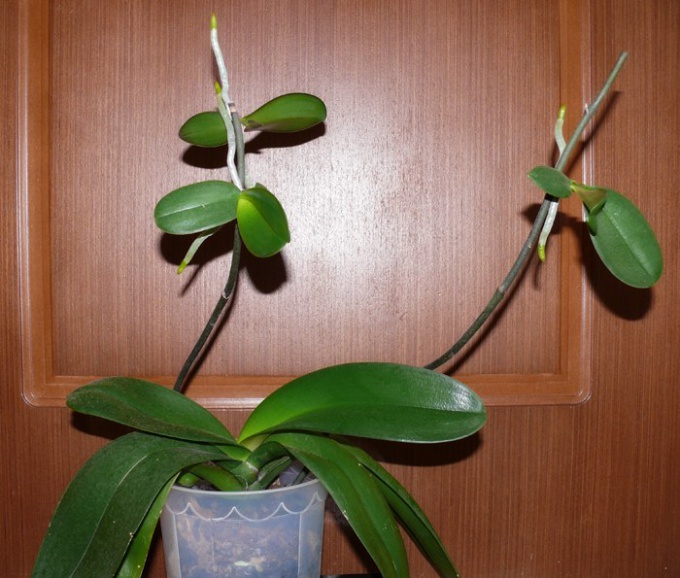Have faded orchids should carefully inspect the tip of the stem and growing on the sides of the branches. It is possible that it will show a growing tip. If it is not damaged and the color green, the bloom is not over. The probability that there will be more buds. This can happen during the main flowering, and a couple months later after all the flowers fall off.
If the tip of the peduncle has withered and changed color, turned yellow or black, new buds can hardly wait. In this case, the stems should be cut under the base or slightly higher than the highest "sleeping" point. Most varieties of orchids have several dormant buds are covered with protective scales. As further development of the plant these buds can go into growth. So it will form lateral stems or "baby."
You can try to re-bloom on the old stem. For this it is necessary to cut a couple of inches above the kidneys. But the guarantee that the kidney will Wake up, no, no, the plant may just stand a while, and then wither from old age.
Care for a wilting Orchid is not especially different from care in another period. The plant still needs a good watering, sufficient humidity, lighting, disease prevention and treatment against pests. The dormant period can reduce the frequency and volume of feeding of orchids, the flower it is better to move to another pot. About the need to transplant the plant will tell you the roots sticking out of the bottom pot holes and that the soil dries quickly after watering. The need for a transplant can occur after about two or three years.
Temperature for resting plants should maintain the same which it used in the flowering period. You can slightly make a shade for it. Not have to move the Orchid from place to place or expand it. The plant is at rest hard to adapt to sudden change of environmental conditions. Do not be upset if, even with careful and meticulous care the plant does not want to blossom anew. It happens that the Orchid is resting and for about a year. From the growers need to maintain optimal plant conditions that, when coming out of hibernation Orchid didn't have to spend a lot of effort to adapt.
What to do with the Orchid that is bloom
If the tip of the peduncle has withered and changed color, turned yellow or black, new buds can hardly wait. In this case, the stems should be cut under the base or slightly higher than the highest "sleeping" point. Most varieties of orchids have several dormant buds are covered with protective scales. As further development of the plant these buds can go into growth. So it will form lateral stems or "baby."
You can try to re-bloom on the old stem. For this it is necessary to cut a couple of inches above the kidneys. But the guarantee that the kidney will Wake up, no, no, the plant may just stand a while, and then wither from old age.
What to do with an Orchid that is in a "sleep" state
Care for a wilting Orchid is not especially different from care in another period. The plant still needs a good watering, sufficient humidity, lighting, disease prevention and treatment against pests. The dormant period can reduce the frequency and volume of feeding of orchids, the flower it is better to move to another pot. About the need to transplant the plant will tell you the roots sticking out of the bottom pot holes and that the soil dries quickly after watering. The need for a transplant can occur after about two or three years.
Temperature for resting plants should maintain the same which it used in the flowering period. You can slightly make a shade for it. Not have to move the Orchid from place to place or expand it. The plant is at rest hard to adapt to sudden change of environmental conditions. Do not be upset if, even with careful and meticulous care the plant does not want to blossom anew. It happens that the Orchid is resting and for about a year. From the growers need to maintain optimal plant conditions that, when coming out of hibernation Orchid didn't have to spend a lot of effort to adapt.






